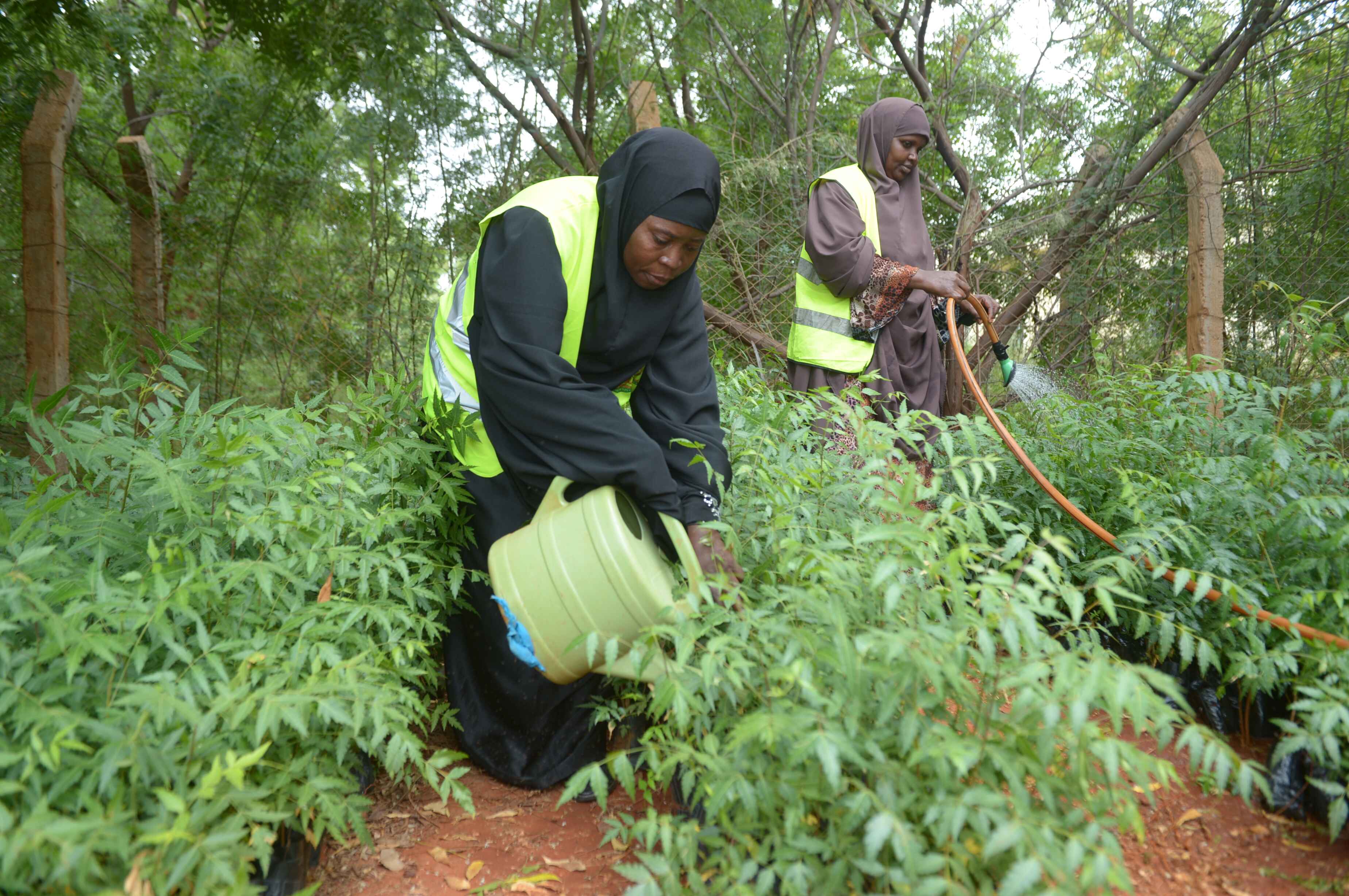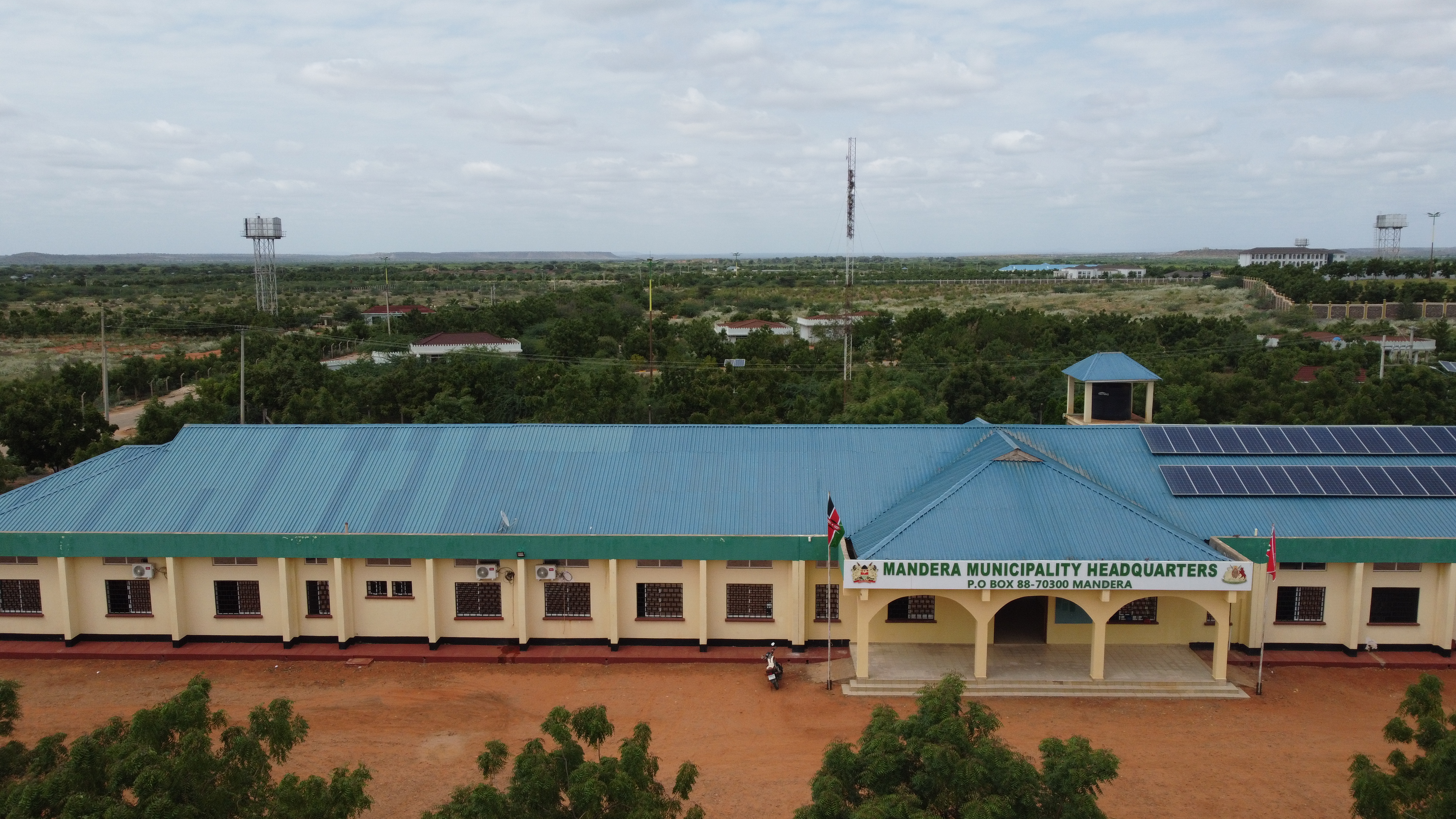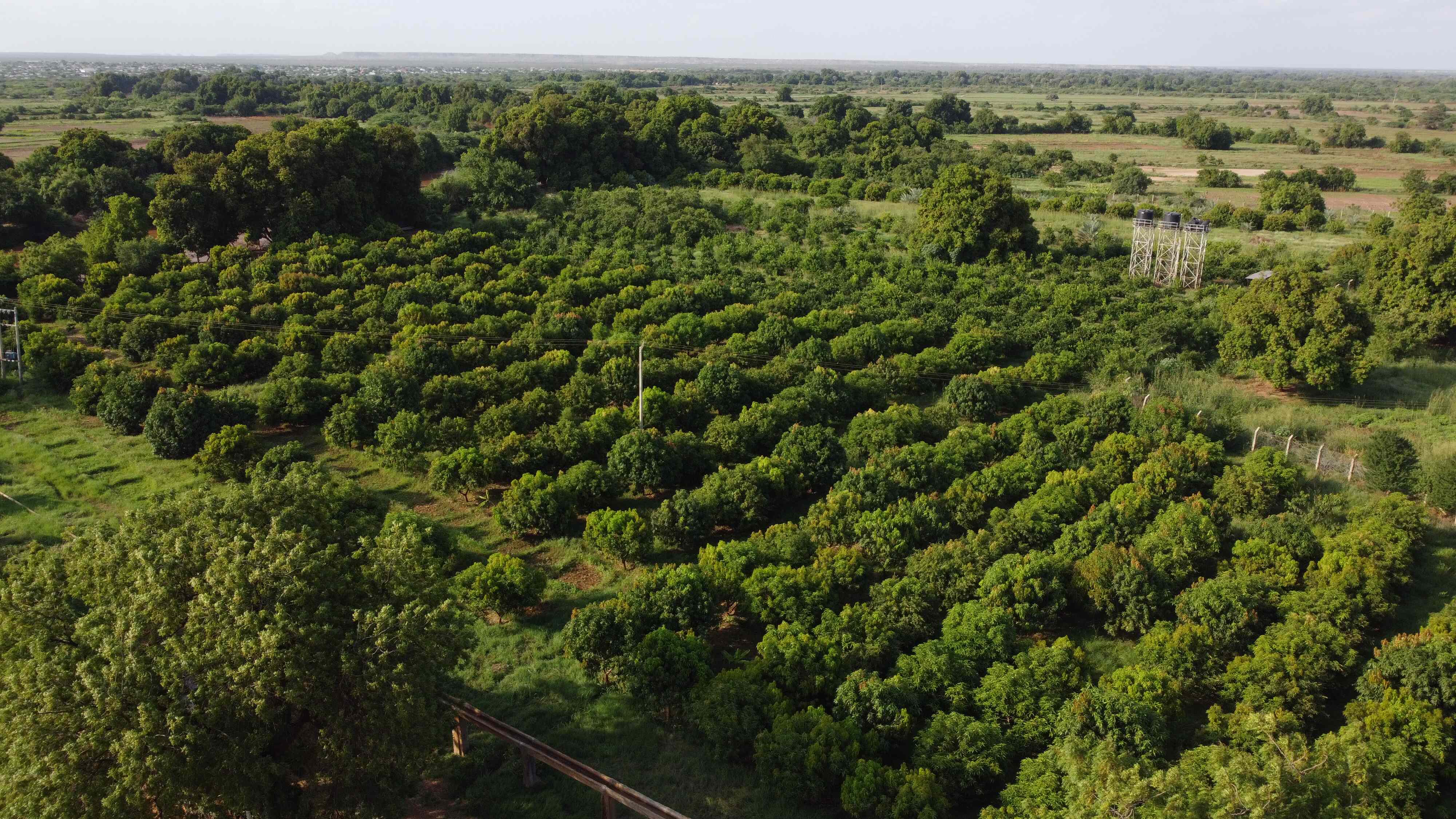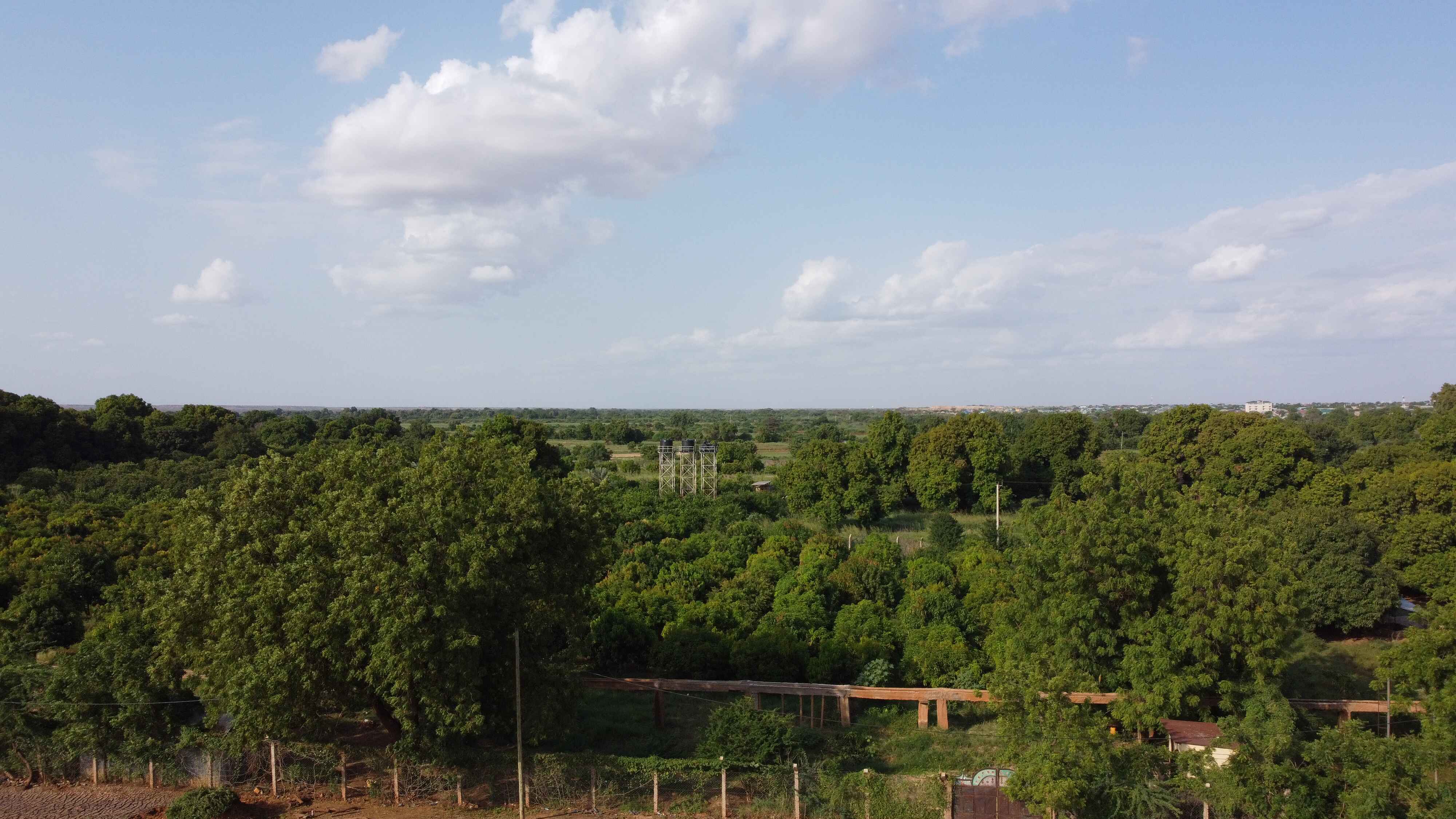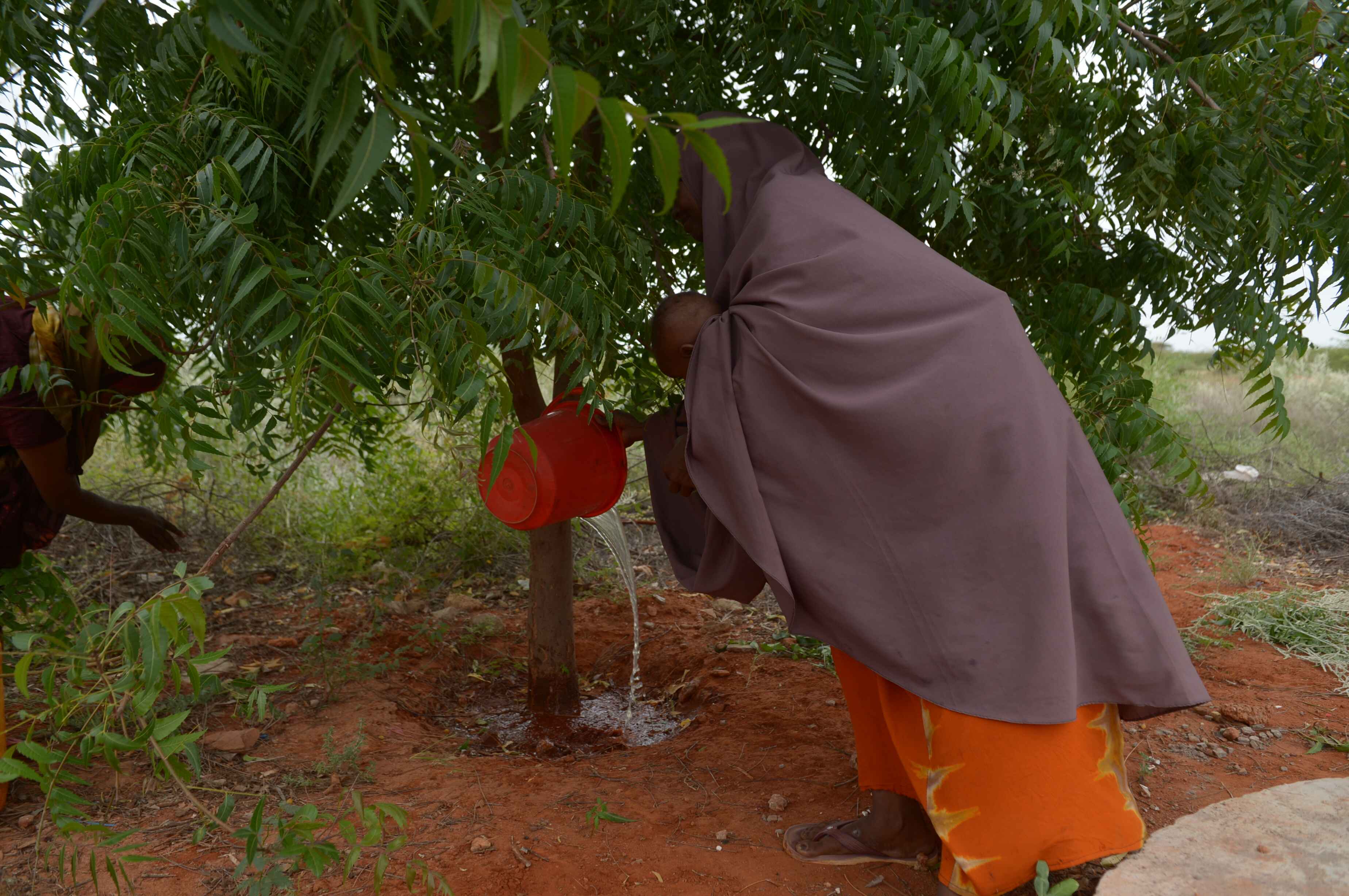About Us
The Making of Mandera Green County
As the drone camera goes airborne and sends footage down from the sky, you cannot help but marvel at the lush vegetation...
Nestled at the intersection of Kenya, Somalia and Ethiopia, Mandera County has long been known for its arid landscape and harsh climate. The local community has a name for it: Busli in the local dialect which means “a dusty place.”
However, a name change has beckoned, thanks to the remarkable transformation that is underway. The Green Program, spearheaded by the County Government of Mandera and supported by the community, is at the heart of this inspiring change. The county is becoming a thriving green haven - literally.
"A chat with Hon. Mohamed Adan Khalif, the county’s governor, paints a picture of a man who is on a mission to transform the county from a dusty to a green county. As he talks about the program, breaking his thought process with bits of smiles, reflective pauses, and measured words, he exudes passion, focus and commitment towards the initiative. He talks of milestones made, challenges encountered and what the future promises for the county"
Environmental Challenge
Governor Khalif explains that the idea of the Green Program originated from the pressing environmental challenges that faced Mandera County. “When the civil war broke out in Somalia in 1991, refugees poured into Kenya, specifically Mandera County, as they sought protection. Mandera hosted one of the biggest refugee camps within the region at the time,” he says.
“With the need to sustain their livelihoods, the repercussion was the immense destruction of the environment. By the time the United Nations (UN) relocated the refugees to the newly created Kakuma and Dadaab Refugee Camps, the entire Mandera County had been seriously affected by deforestation which exacerbated the region’s arid and semi-arid conditions,” adds Governor Khalif.
Thus, to mitigate the impact of the environmental damage and recognise the urgent need for conservation and restoration, the County Government of Mandera initiated a collaborative effort which brought together various stakeholders to combat soil erosion and reduce the impact of climate change. This was in addition to regenerating the natural water cycle.
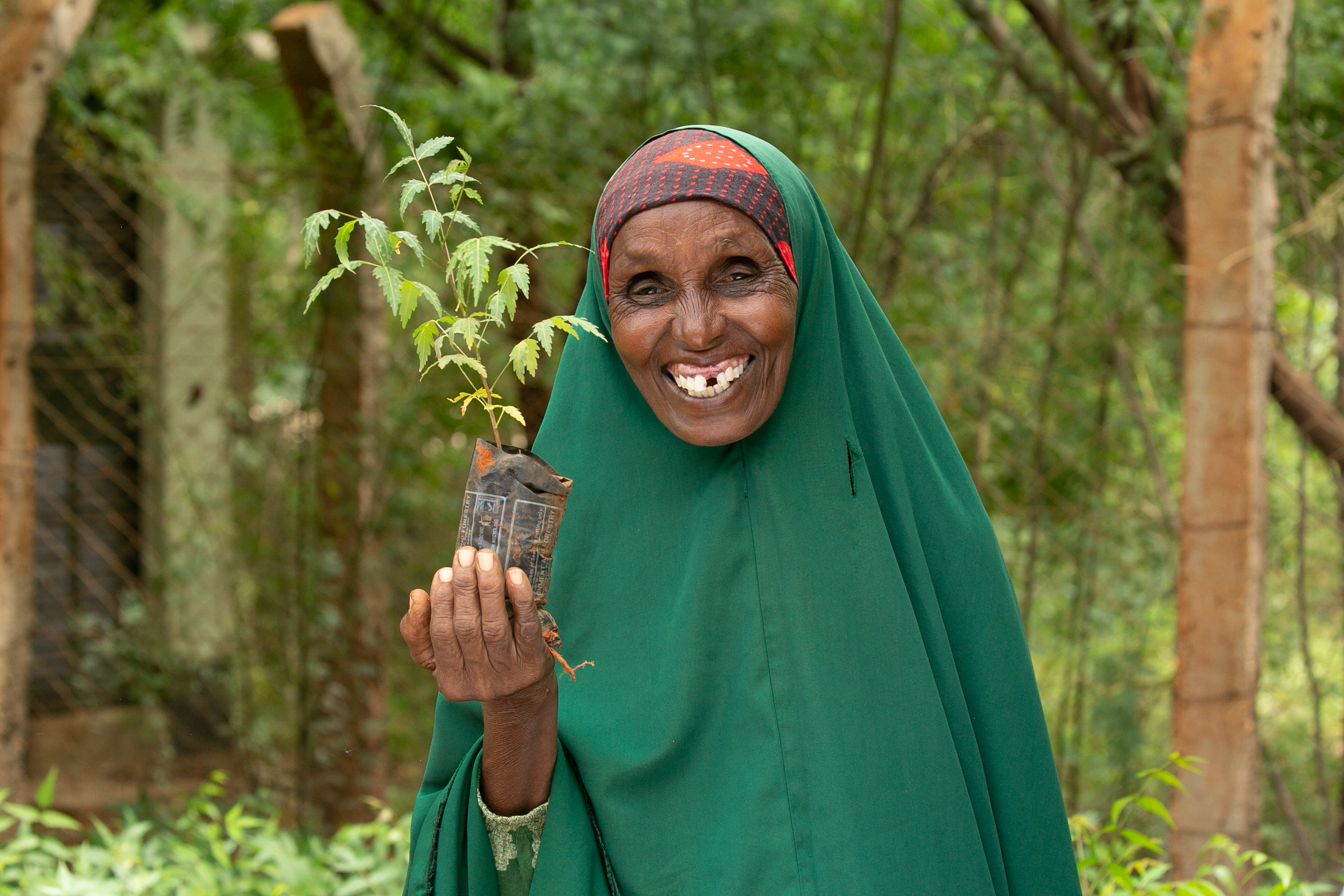 "Habiba Huka"
"Habiba Huka"
“The cost of planting and maintaining a single tree for seven year is KSh 88,400. This cost goes into salaries for the women, water storage infrastructure, irrigation and general maintenance of the trees,” he says.
From the onset, the program which is sustained through a grant from the county government treasury, has employed a multifaceted approach which includes employing vulnerable women, mitigating climate change and enhancing urban beautification of Mandera County. By so doing, this strategic approach has addressed multiple socio-economic and environmental priorities simultaneously which has resulted in maximising the programs’ impact and sustainability.
The first phase of the Green Program has seen the county plant 26,000 trees along the streets of Mandera, mostly the municipality area. As the initiative moves into the second phase, an additional 30,000 trees are set to be planted and maintained for the next seven years.
Where it Started
On 15th July 2016, the Green Program was officially launched. “We planned to restore Mandera through afforestation and our initial focus was to begin within the Mandera Municipality. We started with 400 women, mostly mothers, with each taking care of about 20 trees. Two years later, we expanded it to 1,200 mothers who collectively were taking care of 26,000 trees. To date, we have planted over 250,000 trees in various parts of the county,” says Governor Khalif.
In setting up the initial program, the process involved site selection which was followed by the preparation of tree planting sites, selection of suitable tree species and transportation of seedlings. This process was critical and had to be carefully done to ensure optimal conditions for the seedling’s establishment and growth. Watering, mulching and daily maintenance ensured that the trees were protected from interference by humans and animals.
Governor Khalif observes that the task of maintaining the trees has been immense since the climatic conditions in the county require that trees meticulously care for a period of seven years to reach their maturity stage.
The Impact, Challenges, and Future
The Governor is elated at the impact of the program so far. “Mandera is no longer called Busli (a dusty place) but the ‘The Green County.’ We have seen the restoration of our forests thus getting better rainfall in addition to experiencing low temperatures from the extremes that we used to have.”
He adds that the program’s other benefit has included improving the well-being of many families through the provision of employment. “We are expanding the program to other parts of the county besides the municipality area. Recently we planted 1,200 trees at Elwak as part of our plan to expand this program into every sub-county within Mandera,” says Governor, Khalif.
As the County Chief celebrates the milestone made, he reflectively looks back at the journey the county has made towards the program and points out that the initiative has had to deal with the scarcity of water as its main challenge. In addition, he says that there has been a big demand by many locals to be included in the program since they see it as an employment opportunity.
 "Governor Mohamed Adan Khalif"
"Governor Mohamed Adan Khalif"
Governor Khalif rightly observes that the primary challenge in Mandera and the broader ASAL (Arid and Semi-Arid Lands) region is water scarcity mainly caused by unreliable rainfall. He notes that solving the water problem is crucial for achieving food security, reducing poverty and ensuring the general security of the region.
In addition, the county is looking at harnessing solar energy as an additional infrastructure for use in lighting, water pumping and farm irrigation. Currently, the country has 1,200 solar-powered street lights, has powered 88 boreholes and is working on integrating solar power to major to the two main hospitals in the county; Mandera County Referral Hospital and Elwak County Referral Hospital.
“We have a remarkable transformation that is happening and I welcome each one of you to visit Mandera, the Green County. Besides hosting Kenya’s beacon number one, it is a green and transformative county with many unique things,” concludes Governor Khalif.
Governor Khalif rightly observes that the primary challenge in Mandera and the broader ASAL (Arid and Semi-Arid Lands) region is water scarcity mainly caused by unreliable rainfall. He notes that solving the water problem is crucial for achieving food security, reducing poverty and ensuring the general security of the region.
To address the water challenge, the county has procured a state-of-the-art water exploration machine, one of only three in Kenya, and is currently training personnel to use it. Once it is operational, the county hopes to expand water sources within Mandera and therefore stop over-reliance on the seasonal River Dawa whose source is the Ethiopia highlands.
